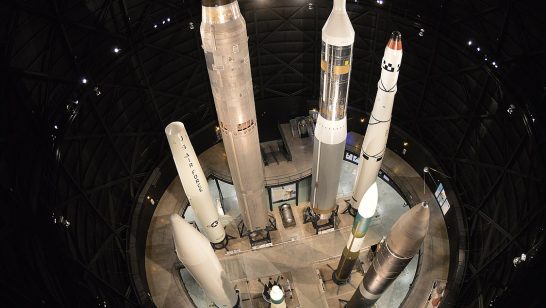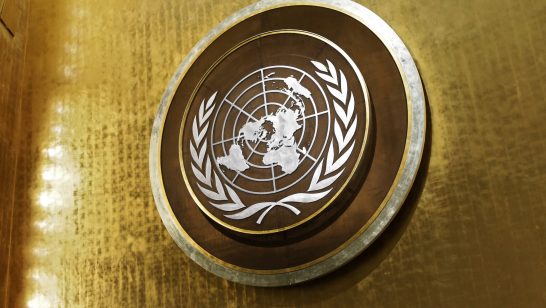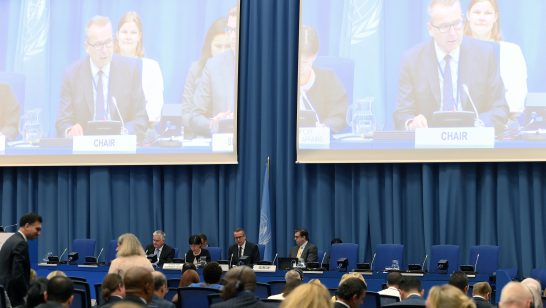
The views and opinions of the author expressed herein are his own personal views and do not necessarily state or reflect those of the United States government or Lawrence Livermore National Security, LLC. LLNL-TR-859582.
In a move disputed under the provisions of the New Strategic Arms Reduction Treaty (New START), Russian President Putin “formally suspended” Russia’s participation in the treaty on February 28, 2023, citing concerns over U.S. support for Ukraine and the need to include British and French nuclear forces in arms control talks. Russia’s suspension of New START, as well as the treaty’s impending expiration on February 4, 2026, with no subsequent agreement in sight, means that the global nuclear order edges closer to the collapse of formal bilateral nuclear arms control.
Initially set for a ten-year duration, New START was extended by mutual agreement in early 2021 for an additional five years until February 4, 2026. The terms of the treaty do not allow for a second extension, however, meaning that the legally binding numerical limits on U.S. and Russian strategic offensive forces will cease to be in effect after that date. Despite the treaty’s suspension, both parties have stated publicly that they continue to abide by New START’s numerical caps on strategic offensive weapons and launchers. Although, in theory, both parties could continue to voluntarily observe the New START central limits even after the treaty expires, in practice, such voluntary measures will be rather fragile. They would lack the verification provisions provided under the treaty, and many have questioned New START’s continued relevance in a deteriorating and increasingly multipolar security environment.
The coming “arms control interregnum”
Attempts to negotiate new arms control agreements between the United States, Russia, and China in a bilateral or trilateral constellation have proven unsuccessful thus far. Although Russia and China have signalled an interest in renewed constraints on U.S. ballistic missile defence systems, novel restraints on U.S. conventional prompt global strike capabilities (CPGS) and extended deterrence, and the termination of AUKUS submarine cooperation, none of these proposals have appealed to the United States.
But whereas Washington remains ready to engage in arms control talks with Russia and China “without preconditions,” Russia is unwilling to enter negotiations with the United States unless the United States guarantees the end of Western military support for Ukraine. As Russian Deputy Foreign Minister Ryabkov has recently reiterated, Russia rejects the idea of “compartmentalising” arms control discussions from the wider spectrum of U.S.-Russian strategic relations. China, too, may be reluctant to “compartmentalise,” and “only seek to discuss nuclear weapons in the context of the overall strategic relationship.”
At the same time, China, like Russia, has demonstrated little interest in mitigating or managing nuclear risks, recent U.S.-China talks notwithstanding. According to the 2023 U.S. China Military Power Report, China currently possesses an arsenal of around 500 operational nuclear warheads, with the U.S. Department of Defense estimating that “the PRC will probably have over 1,000 operational nuclear warheads by 2030, much of which will be deployed at higher readiness levels and will continue growing its force to 2035 in line with its goal of ensuring PLA modernisation is ‘basically complete’ that year.” China’s drastic expansion of its arsenal signals the emergence of a new tripolar security environment, in which the United States and its allies face, for the first time, two nuclear peers at once.
Although the emerging tripolar nuclear order makes reciprocal arms control more valuable for ensuring transparent and predictable deterrence relationships, particularly in regard to reducing uncertainty about force structure, tripolarity complicates arms control significantly. A tripartite strategic forces agreement placing the same firm numerical limits on the Russian, Chinese, and U.S. arsenals is unlikely to appeal to Washington, Moscow, and Beijing. From Washington’s perspective, a worst-case scenario could see Moscow’s and Beijing’s “friendship without limits” evolve into a combined strategic force outnumbering the American strategic arsenal by two to one. It is equally questionable if such an agreement would appeal to Russia or China, given the considerable uncertainty about their nuclear intentions. For example, if Russia concludes from its war against Ukraine that it requires an even greater dependence on nuclear forces to compensate for conventional shortcomings, then it is unlikely to commit to nuclear arms control. Similarly, China’s nuclear buildup has left analysts wondering if Beijing’s nuclear arsenal will peak at the projected 1,000 warheads by 2030, or if China will seek nuclear parity or superiority. Thus, Beijing may or may not be interested in arms control in the future.
Surviving the arms control interregnum
The NPT membership must prepare for a security environment unconstrained by nuclear arms control. The defining challenge of this arms control interregnum is to ensure the NPT survives Russian brinkmanship and Chinese ambivalence.
Over the last decade, Russia’s behaviour has caused the collapse of the Intermediate-Range Nuclear Forces Treaty, the Open Skies Treaty, the Conventional Forces Europe Treaty, and the weakening of the Comprehensive Nuclear-Test-Ban Treaty and the Chemical Weapons Convention. Moscow’s obstructionism at the 2022 NPT review conference and the 2023 preparatory committee indicate that Russia is openly weaponising the NPT in a bid to collapse the rules-based international order. President Putin seeks “new rules or no rules.”
China, for its part, appears mostly ambivalent about the NPT rather than openly confrontational toward the nonproliferation regime. But despite China’s stated desire to be seen as a responsible nuclear-weapon state, Beijing has drastically expanded its nuclear arsenal, undermined the enforcement of sanctions against the DPRK, and refused to adopt a moratorium to produce fissile material for weapons purposes.
These different approaches notwithstanding, Moscow and Beijing may converge in the assessment that a robust NPT is primarily a Western objective and, as such, not necessarily in their best interest. After all, a nuclear-armed DPRK and a nuclear-arming Iran may be more of a nuisance or distraction to the Western world than to Moscow and Beijing. Unlike during the Cold War, when the Soviet Union saw nonproliferation as a tool to stabilise U.S.-USSR deterrence, today Moscow and Beijing may view the emergence of smaller nuclear powers as diverting attention away from Moscow’s and Beijing’s nuclear behaviour. To varying degrees, Moscow’s and Beijing’s calculus may be that a weak or defunct NPT will drain Western resources, symbolise the weakening of the rules-based international order, and precipitate the further material decline of the collective West.
The arms control interregnum will likely exacerbate the existing divisions between the NPT membership. But if the NPT review process simply becomes a talking shop in which review conferences fail to reach consensus on an outcome document, then the likelihood that the NPT will share the fate of the now defunct arms control treaties increases significantly. Although the NPT can only succeed with Russian and Chinese cooperation (or at least acquiescence), the crucial task before the NPT membership for the foreseeable future is to prevent Russian brinkmanship and Chinese ambivalence from eroding the regime.
Safeguarding the NPT through the arms control interregnum requires leadership. The West must offer a compelling vision for ensuring the NPT’s resilience that resonates with as broad a coalition of States parties as possible across geographic and political divides—including with those States parties that will lament the backtracking on article VI, and with those States parties that have preferred not to take sides in what they perceive as a new cold war.
In practical terms, this vision must go on the offensive with a persuasive narrative about real nuclear dangers, the value of the nonproliferation regime, and the responsibility of Western actions (including modernisation). The community of NPT supporters must join forces to call out Russian obstructionism and Chinese ambivalence to undermine their credibility and demonstrate that the treaty remains relevant and is being upheld to the extent possible. Although statements in isolation will not suffice, one means of demonstrating the NPT’s resilience and the international community’s commitment to the regime is reaffirming the value of the NPT in the new security environment, highlighting that a strong NPT strengthens international security, and that a weak or defunct barrier to nuclear proliferation diminishes international security. The NPT membership should also use the arms control interregnum to prepare future arms control opportunities by advancing disarmament verification and continuously seeking cooperative risk reduction measures, echoing the cold-war pattern where arms competition eventually led to negotiated arms limitation treaties.
The opinions articulated above represent the views of the author(s) and do not necessarily reflect the position of the European Leadership Network or any of its members. The ELN’s aim is to encourage debates that will help develop Europe’s capacity to address the pressing foreign, defence, and security policy challenges of our time.
Image credit: Wikimedia Commons / 内閣官房内閣広報室



